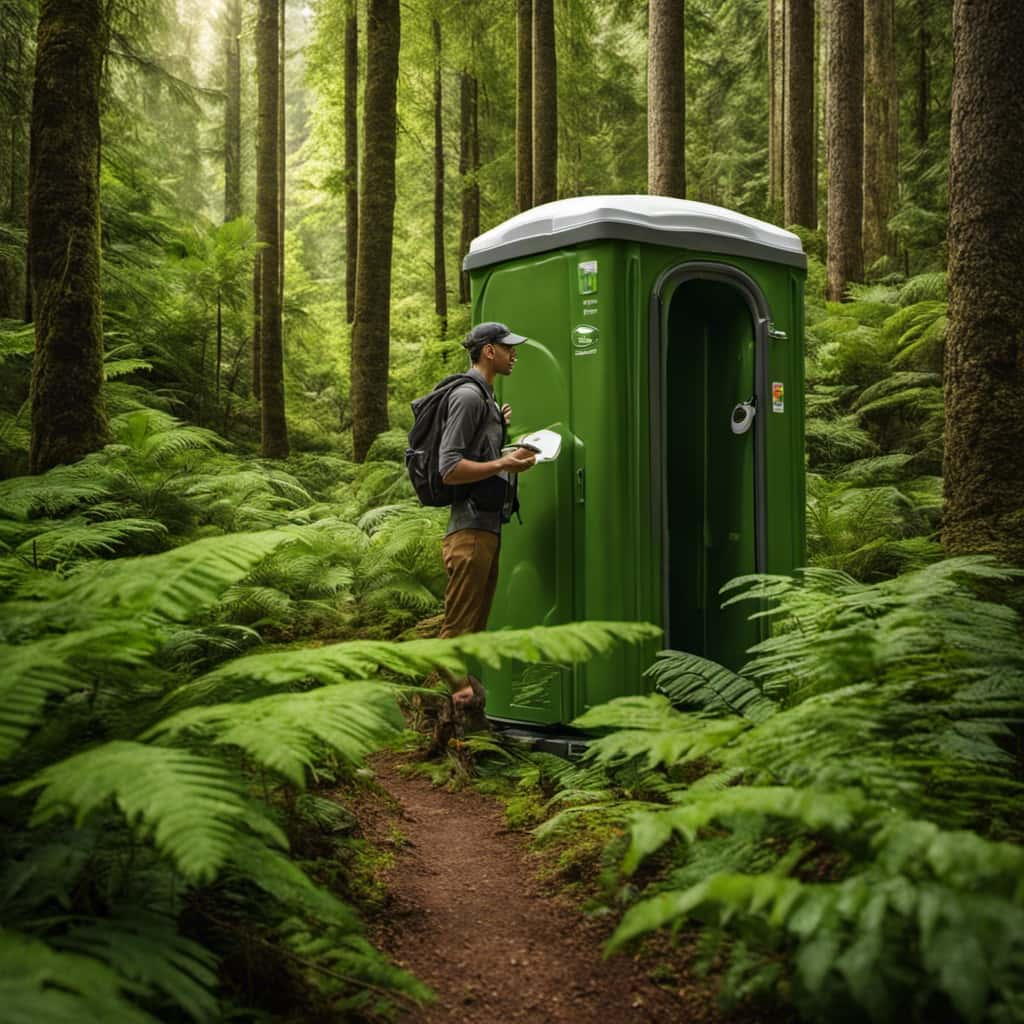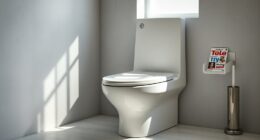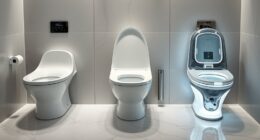The familiar adage ‘Every penny counts’ holds true, especially when it comes to our water bills.
Have you ever wondered if flushing the toilet less could actually save you money? In this article, we’ll dive into the relationship between water usage and cost, explore the factors that affect water consumption, and discover the potential savings from reducing toilet flushes.
So, let’s get ready to master the art of saving money while being mindful of our water usage!
Key Takeaways
- Flushing the toilet less can significantly reduce water consumption and lower water bills.
- Implementing water-saving techniques, such as using efficient appliances and fixing leaks, can further reduce water usage.
- Installing dual-flush toilets or low-flow toilets can provide more control over water usage and contribute to water conservation.
- Reducing toilet flush frequency not only saves money but also benefits the environment and water treatment facilities.
Water Usage and Cost Relationship
How does reducing our toilet flushing save us money on water usage and costs?
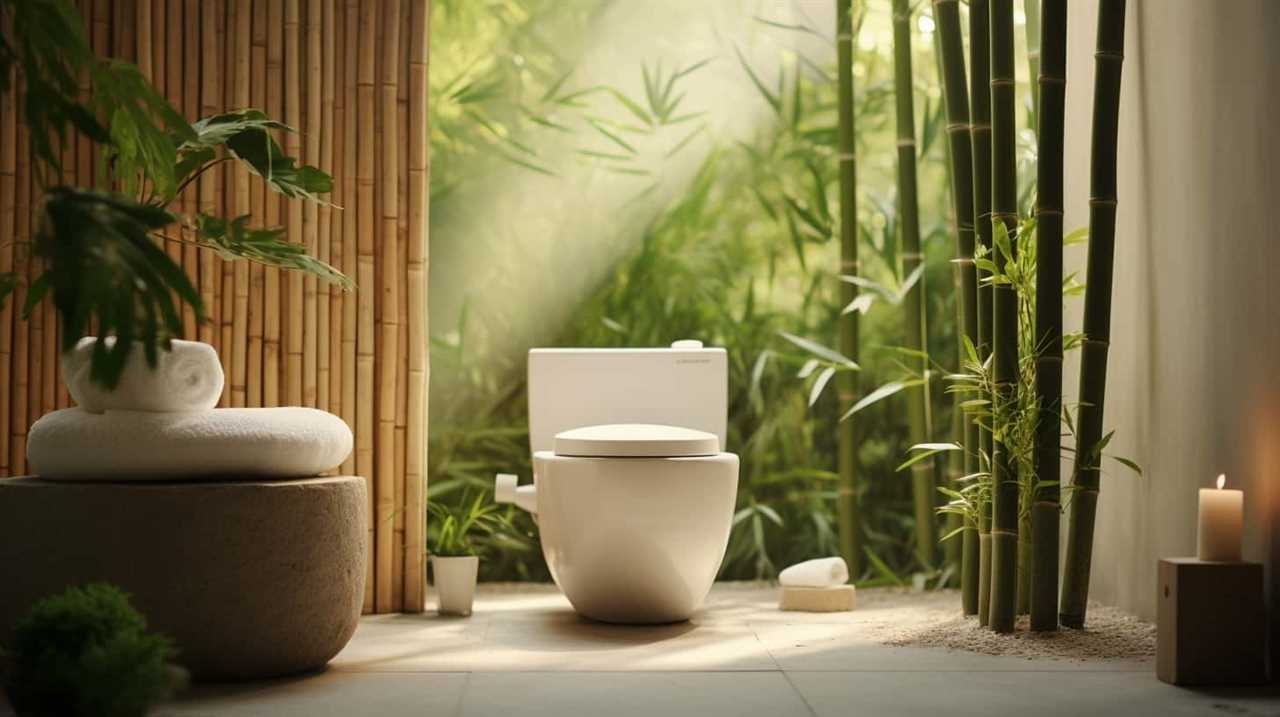
By implementing water conservation techniques, we can achieve significant long-term benefits in terms of both our wallet and the environment.
When we flush the toilet, a large amount of water is used to carry away waste. However, by reducing the frequency of flushing, we can conserve water and reduce our water bills.
Additionally, modern toilets come equipped with dual-flush mechanisms, allowing us to choose between a full flush for solid waste and a partial flush for liquid waste. This further reduces water usage and costs.
It’s important to note that while reducing toilet flushing may seem like a small change, it can have a substantial impact on our overall water consumption and financial savings.

Factors Affecting Water Consumption
To understand the factors affecting water consumption, let’s delve deeper into the ways in which our daily habits and household appliances contribute to our overall water usage. One major factor is toilet water efficiency. Older toilets can use up to 6 gallons of water per flush, while newer models use as little as 1.28 gallons. Upgrading to a more efficient toilet can significantly reduce water consumption. Another factor is our water conservation techniques. Simple habits like turning off the tap while brushing our teeth or using a dishwasher instead of handwashing dishes can make a big difference. Additionally, fixing leaks and using water-efficient appliances, such as washing machines and showers, can further reduce our water usage. By being mindful of these factors, we can contribute to a more sustainable water future.
| Factor | Description | Impact |
|---|---|---|
| Toilet water efficiency | Older toilets use more water per flush than newer models. | Upgrading to efficient toilets reduces usage. |
| Water conservation techniques | Adopting habits like turning off taps and using efficient appliances. | Significant reduction in water consumption. |
| Fixing leaks | Repairing leaks in pipes and faucets. | Prevents wastage of water. |
| Water-efficient appliances | Using appliances that consume less water. | Decreases overall water usage. |
Impact of Flushing Frequency on Water Bill
To understand the impact of flushing frequency on our water bill, let’s consider the role it plays in our overall water consumption habits.
Flushing the toilet is one of the largest uses of water in a household. The more frequently we flush, the more water we use, and ultimately, the higher our water bill becomes. However, reducing flushing frequency can lead to significant savings.
By implementing water conservation tips, such as only flushing when necessary, we can minimize our water usage and lower our bills. Moreover, reducing flushing frequency has environmental benefits as well. Conserving water helps to preserve our planet’s precious resources and reduce the strain on water treatment facilities.
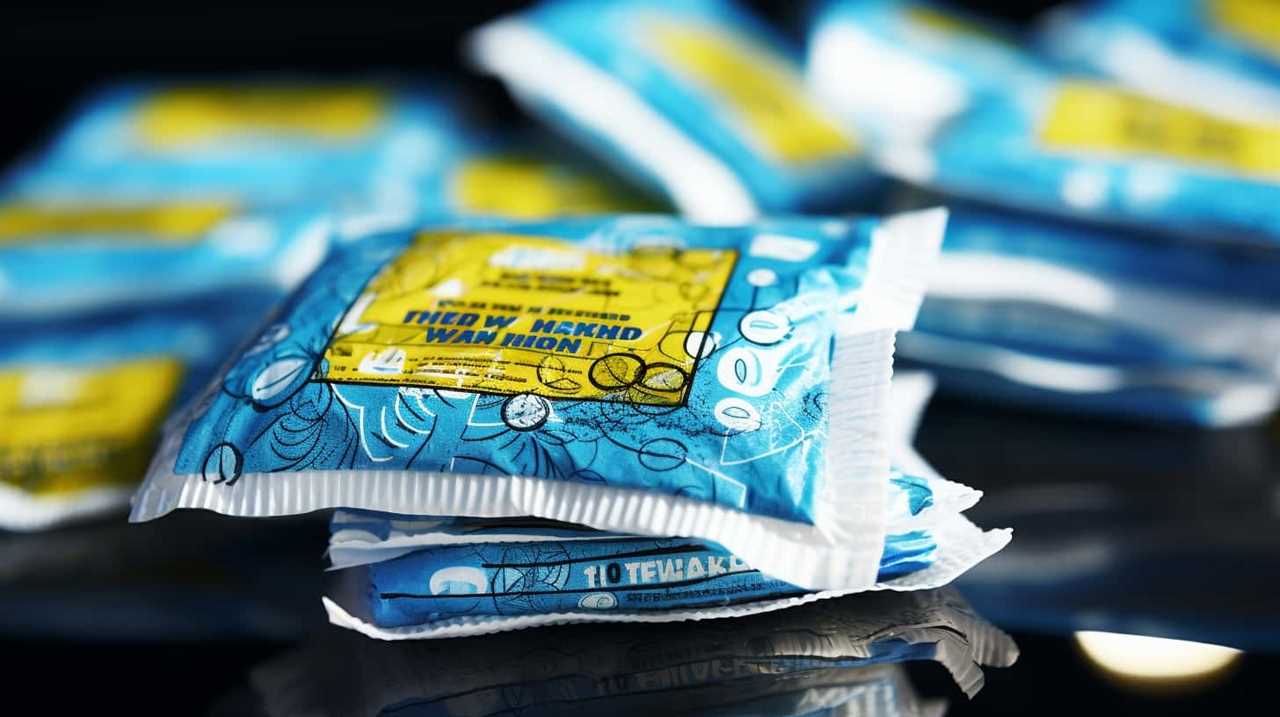
Potential Savings From Flushing Less
By flushing the toilet less frequently, we can potentially save money. Studies on toilet flush frequency have shown that reducing the number of times we flush can significantly decrease toilet water usage, leading to lower water bills. To illustrate the potential savings, let’s consider a comparison between flushing the toilet after each use versus flushing every other use.
| Flush Frequency | Average Daily Flushes | Water Usage per Flush (gallons) | Monthly Water Usage (gallons) |
|---|---|---|---|
| After Each Use | 6 | 1.6 | 288 |
| Every Other Use | 3 | 1.6 | 144 |
Assuming a water cost of $0.01 per gallon, the monthly savings from flushing every other use would be $1.44. While the savings may seem small, they can add up over time. Therefore, by being mindful of our toilet flush frequency, we can make a significant impact on our water bills.
Considerations for Reducing Toilet Flushes
Reducing toilet flushes requires careful consideration of efficiency and conservation methods. One option to decrease water usage is by installing a dual-flush toilet. These toilets have two buttons, allowing users to choose between a full flush for solid waste or a reduced flush for liquid waste.
Another alternative is a low-flow toilet, which uses less water per flush compared to traditional toilets. Additionally, using toilet tank displacement devices, such as a toilet dam or a plastic bottle filled with water, can reduce the amount of water used per flush.
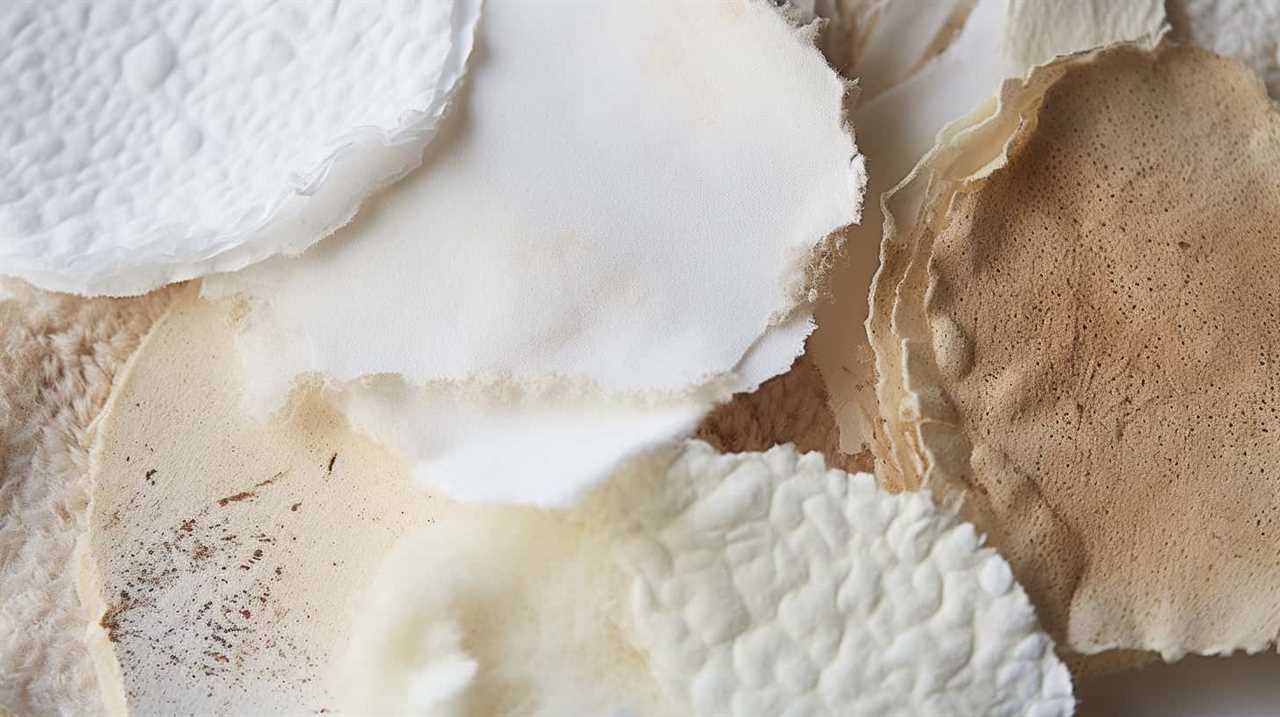
These alternatives not only save water but also provide environmental benefits by reducing water consumption and conserving resources. Consideration of these toilet flush alternatives can contribute to a more sustainable and eco-friendly approach to water usage in households.
Frequently Asked Questions
How Does the Cost of Water Vary Across Different Regions or Areas?
The cost of water can vary greatly across different regions or areas due to factors such as availability, infrastructure, and demand. Understanding these variations is crucial for managing water consumption and optimizing costs.
Are There Any Government Regulations or Incentives That Encourage Water Conservation?
There are government regulations and incentives that encourage water conservation. These measures aim to promote responsible water usage and reduce waste. By implementing these policies, individuals and businesses can save money while protecting the environment.
Can Using Water-Saving Appliances or Fixtures, Such as Low-Flow Toilets, Significantly Reduce Water Consumption?
Using water-saving appliances or fixtures, such as low-flow toilets, can significantly reduce water consumption. This has water saving benefits and a positive environmental impact.
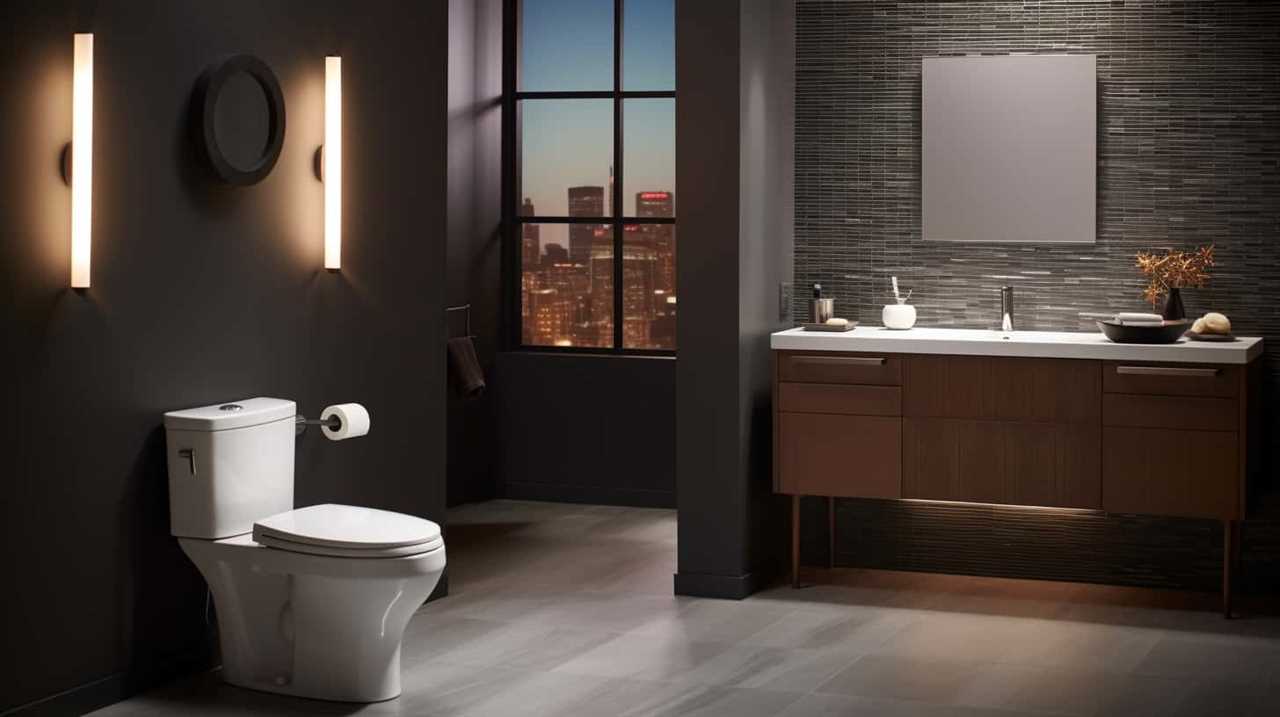
Are There Any Alternative Methods or Technologies Available to Reduce Toilet Flushes Without Compromising Hygiene?
Toilet flush alternatives and water-saving technologies provide effective methods to reduce water consumption without compromising hygiene. These innovations offer viable solutions for individuals seeking to conserve water and promote sustainability in their homes.
How Does the Frequency of Toilet Flushing Impact the Overall Water Usage in a Household?
Toilet flushing frequency directly affects overall water usage in households. Understanding this correlation is crucial for water conservation. Low flow toilets have a significant impact, but alternative flush reduction methods should also be explored for maximum water conservation incentives.
Conclusion
In conclusion, reducing the frequency of toilet flushing can indeed save money on your water bill. By being mindful of our water consumption and implementing simple strategies such as only flushing when necessary, we can significantly decrease our monthly expenses.
However, it’s important to consider the potential impact on sanitation and hygiene. Balancing conservation efforts with personal comfort is key.
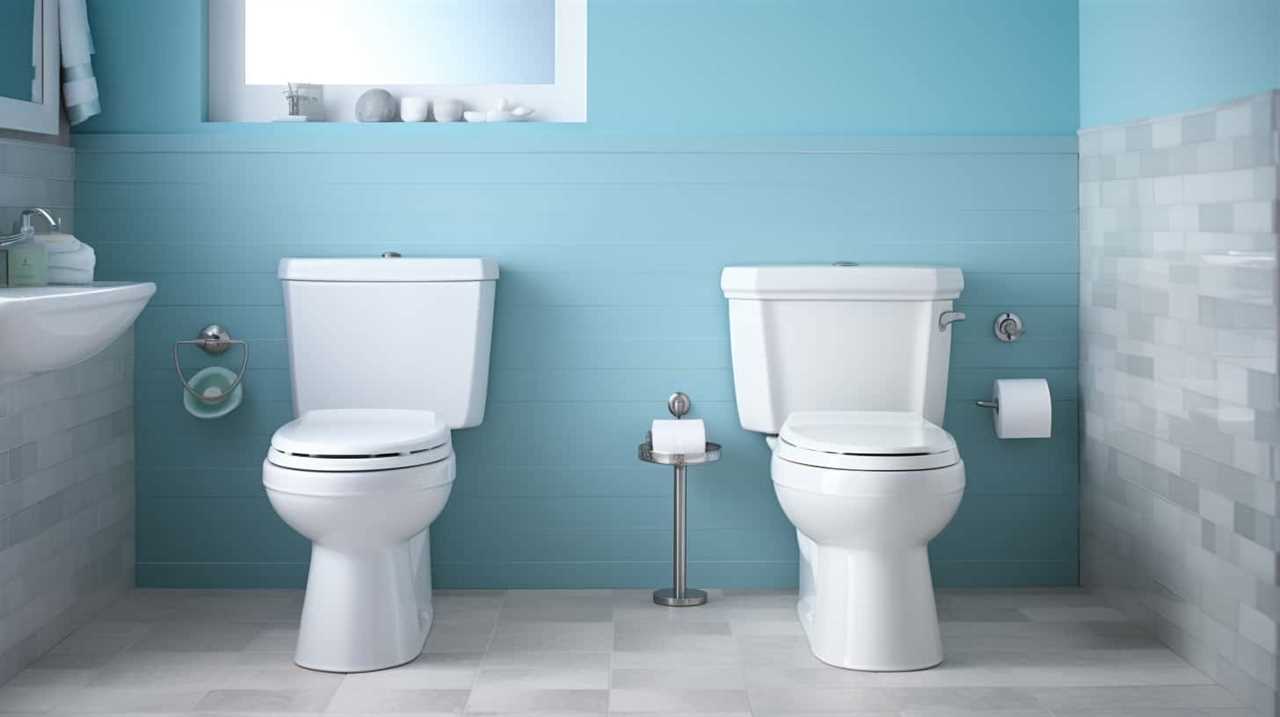
So, let’s take the plunge and start saving those precious pennies!



